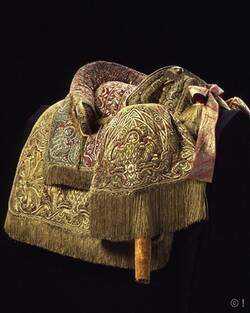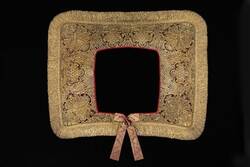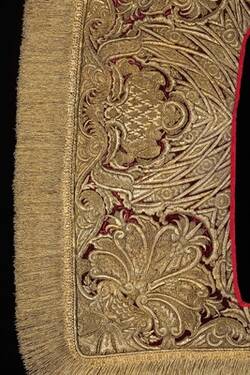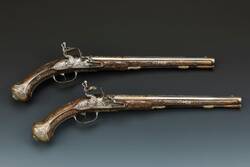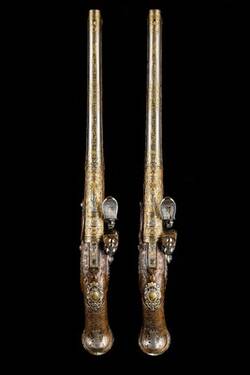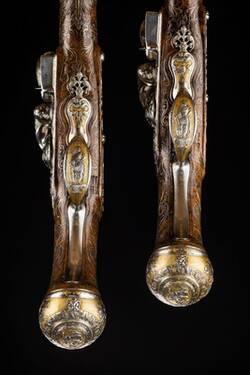The parade saddle was a gift from Louis the Fourteenth of France. In July 1715, the "Sun King" dispatched six lavishly equipped Spanish stallions to Dresden. Nine months earlier, he and August had concluded a treaty of friendship to mark the end of the War of the Spanish Succession. In exchange for the horses, August the Strong sent fine Tokaji fortified wine to Paris.
Each of the six Spanish horses came with its own saddle and bridle made of silk velvet with luxurious gold or silver embroidery. Originally, the riding equipment consisted of a saddle, a caparison, and two pistol holsters with lavishly embroidered holster flaps. The saddles each came with a matching pair of exquisite pistols made by the most skilled gunsmiths at the French court.
August the Strong was so impressed by these magnificent ensembles that he ordered a further nineteen saddles of the same type from Paris in 1717 and ‘18. In 1718 he had large-scale equestrian portraits of himself and his son painted – complete with two of the French saddles and matching bridles. You can find the two state portraits, both painted by Louis de Silvestre, in the Gemäldegalerie Alte Meister – the Picture Gallery.
During the electoral prince’s wedding on the 8th of September 1719, all 24 French saddles were displayed together for the first time. They were borne by hand-led-horses during a festive parade before the Tilting at the Ring event in the stable yard riding arena. The king appeared on horseback in the magnificent golden state dress on display in the centre of the room.
Further Media
- Location & Dating
- Paris (?). 1715.
- Material & Technique
- Leather, wood, linen, horsehair; iron and brass fittings, gilded; outer fabric: crimson silk velvet; relief embroidery: gold woven thread; fringe: gold woven thread.
- Dimenions
- Length 60 cm, width 68 cm, height 55 cm
- Museum
- Rüstkammer
- Inventory number
- L 0026.01
